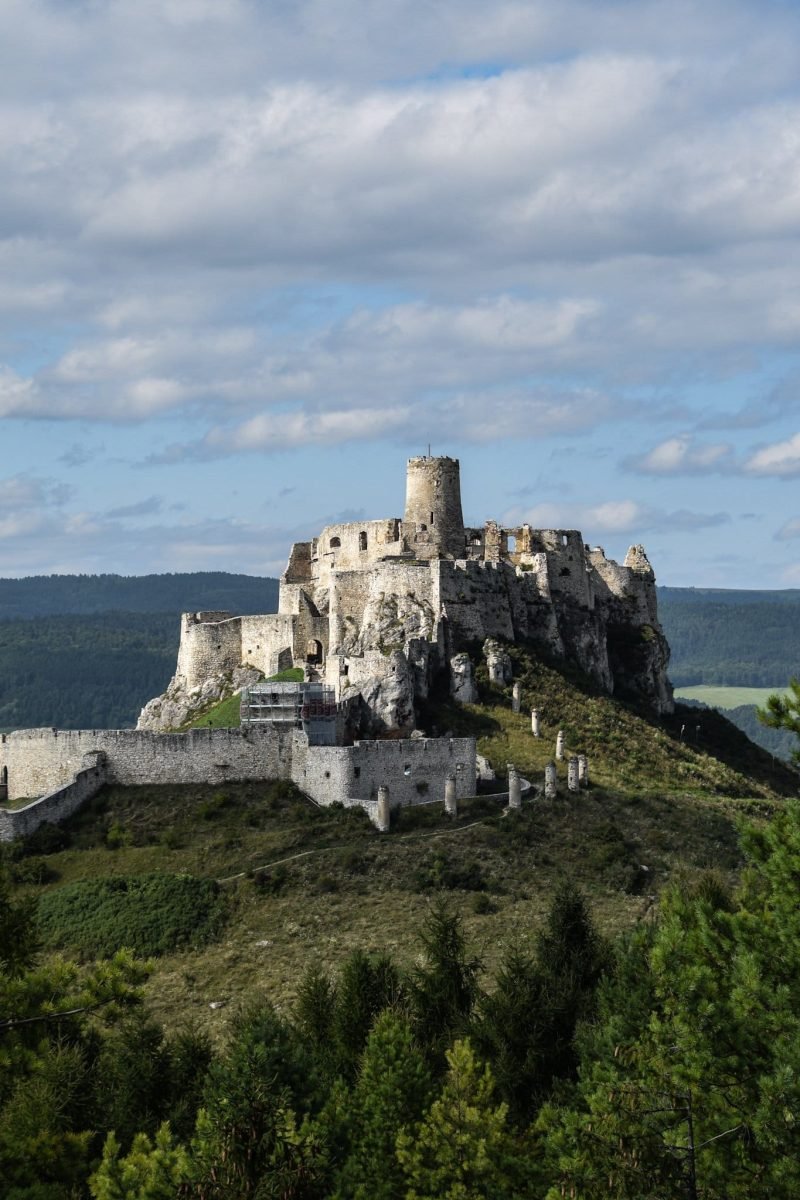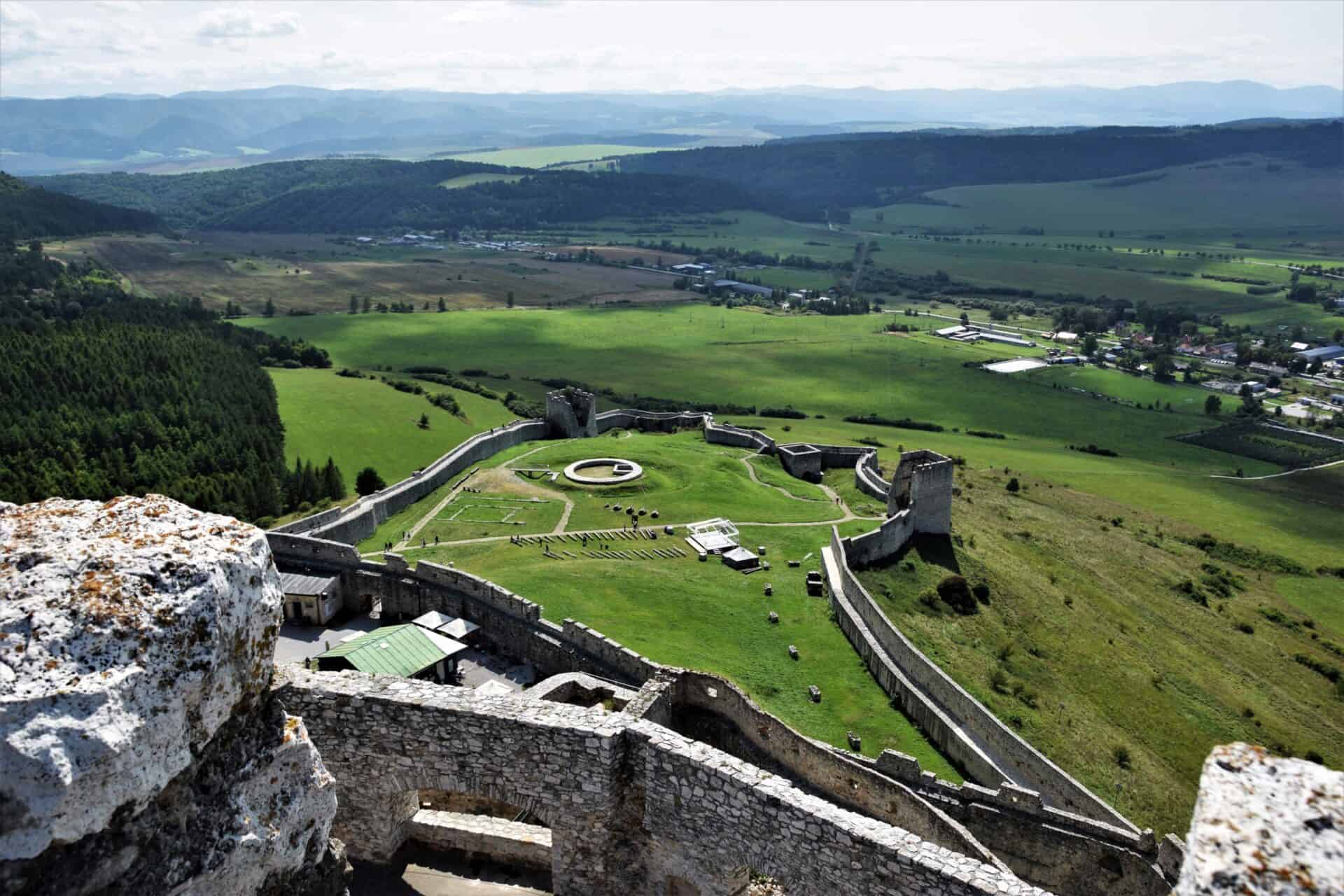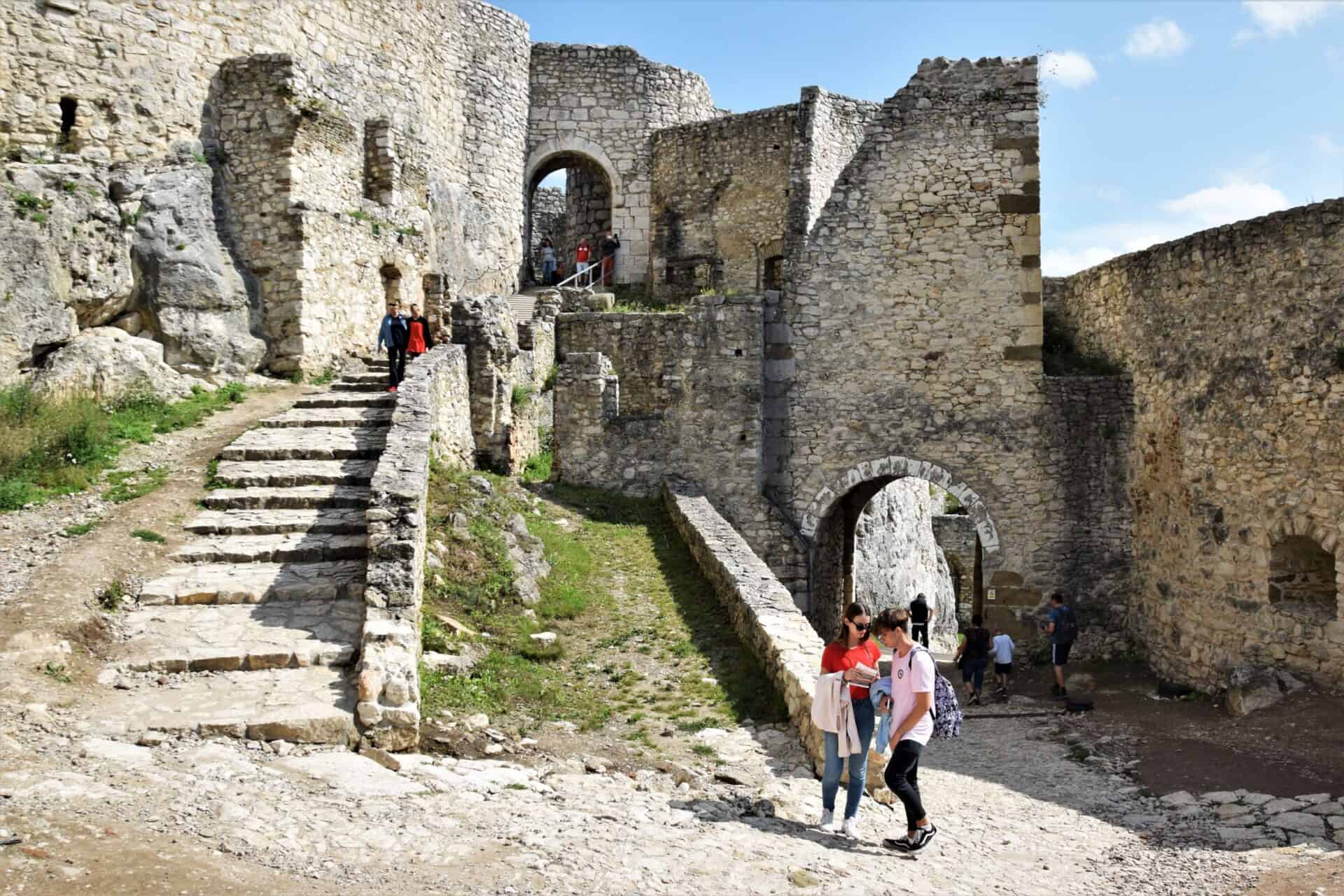In the heart of Slovakia’s historic Spiš country, the grand silhouette of an imposing ruin rises against the looming mountains of the Tatra: Spiš Castle. Enthroned on an exposed limestone outcrop, the remains of this once formidable fortification form one of the largest castle complexes in the world, a magnificent masterpiece of medieval masonry.
Initially constructed in the 12th century by the Kingdom of Hungary, the castle’s battlements were expanded upon multiple times and Spišský hrad quickly became the political and economic centre of the region.
Numerous lines of defences, including watch towers, barricades, a moat, and two baileys, paired with its outstanding natural protection meant that the castle was virtually impenetrable, a stoic guardian at the kingdoms northern periphery and shield against foreign invasions.
Her sole presence was a fierce statement to the realm’s many foes, a promise of failure for those foolish enough to challenge her unrivalled might. Many an army tried their luck in the shadow of her towering ramparts but Spišský hrad humbled them all.
However in 1241, the Mongol hordes appeared on the horizon.

Entrance Fee | General admission: 8€ | Students/Seniors: 6€
Opening Hours | April + October 9:00-16:00 | May-Sep 9:00-18:00 | open every day
Closed | November-March
How to get there from Košice | Either take the train/bus to Prešov, then another bus to Spišske Podhradie, or the train to Krompachy and subsequently the bus to Spišske Podhradie.
Depending on your connection, it will take between 1 ½ and 2 hours to get there.
The castle’s entrance is roughly 20 minutes from the centre of Spišske Podhradie by foot.
Dark smoke rose in the distance and carried with it the stench of death.
Overwhelmed by an unknown adversary, the duke had fallen and the king’s horses and men now lay dead scattered across the muddy riverbanks, their once proud banners torn and sullied beside them. Preceded by horrifying tales of merciless slaughter, the Tartar raiders had swept across the forested hills like a storm tide determined to plunder the land’s riches.
The next morning, Sha’ban Khan commanded his riders to assault the fortress. Wave after wave the soldiers threw themselves against the castle’s battlements, yet wave after wave they were repelled.
However, all too aware of their compromised position, the weary defenders needed to act quickly, and thus, a small band of horsemen under the command of Mikuláš, the steward’s son, sallied out. By pure chance, they came across the great khan’s daugther Šad, resting and watering her horse on a secluded glade, and took her captive.
Concerned about his daugther’s life, Sha’ban Khan was forced to negotiate. The Tartar force had to cease the siege and vacate the realm, in exchange Šad would be released by the tenth day. To guarantee the khan, Mikuláš would ride with the enemy until the princess was safely returned.

And thus, on the thenth day, Šad was released and reunited with her rejoicing kin. In the same hour, Mikuláš was set free, however, he did not revert to the castle immediately but waited under the cover of darkness to meet with Šad, as the two of them had deeply fallen in love during their brief encounter in the woods.
Forsaking her people, they travelled back to Spiš and before long the bells tolled loud and wide to celebrate this most unusual liaison. Darksome clouds loomed over the newlyweds, however.
Enfuriated by his daugther’s betrayal, the khan had sent a cruel gift. On their way back to the keep, an arrow pierced the air burrowing itself deep in the princess’ heart. Her father’s regards had been delivered in the most vile fashion. Her eyes filled with disbelief, Šad passed away in Mikuláš bloodstained arms and his grief-stricken cries carried far across the land.
Bereaved of his love, the broken warrior buried her on the glade they had first caught each others gaze.

Horrifyingly, the princess Šad had met her fate at the hands of her own ruthless kin, but the courageous deeds of Mikuláš ultimately saved the fortress from falling prey to the ravaging Mongols.
In fact, during her long history, Spiš Castle stayed unconquered until she finally fell victim to the flames in 1780 (like every castle in Slovakia ever). What exactly caused the inferno remains unknown, however, scholars suggest that she was either struck by lightning, set ablaze by a moonshine-brewing garrison, or even burnt down by her aristocratic owners themselves who tried to avoid a tax on roofed buildings.
Following the destruction, her once mighty walls started to erode and her resources were slowly reused by the local gentry and peasant population. After World War II, the Czecho-Slovak state acquired the ruins, first declaring them a national monument in 1961, before starting reconstruction eight years later.
In unison with Spišska Kapitula and Žehra, Spišský hrad has since been rightfully declared a World Heritage Site by UNESCO and stands proud as one of the finest examples of medieval defense architecure, not just in Slovakia but all of Europe.


WHAT ELSE TO SEE
SPIŠSKÁ KAPITULA
Spišská Kapitula is a beautifully preserved ecclesiastical town, situated in the western outskirts of Spišske Podhradie.
Often called the Slovak Vatican, St. Martin’s Cathedral boasts majestic altars, lofty ceilings decorated with floral patterns, and a mesmerising mural depicting the coronation of Charles I., king of Hungary.
Many of the castle’s former owners are also buried here.
CHURCH OF THE HOLY SPIRIT
Locate in the village of Žehra, four kilometres south-east of Spiš Castle, the Church of the Holy Spirit is renowned for her exceptional series of murals.
Nearly succumbing to a fire in the 15th century, the oldest paintings date back to the 12th century, displaying the Last Judgement, Golgotha, and the Last Supper, among others.
BEST VIEWS OF THE CASTLE
I recommend two spots to witness Spiš Castle in all her glory:
1. | Head up the small hill right behind the parking lot (the one near the main gate) to get a wonderful view of the castle’s eastern side. Alternatively, you can then follow the path veering off to the left to reach another great vantage point.
2. | Follow the road leading up to Spišska Kapitula. Once you arrive at the cathedral continue walking along the road until you’re past the church’s parking lot to be presented with stunning views of the fortress and the surrounding countryside.
